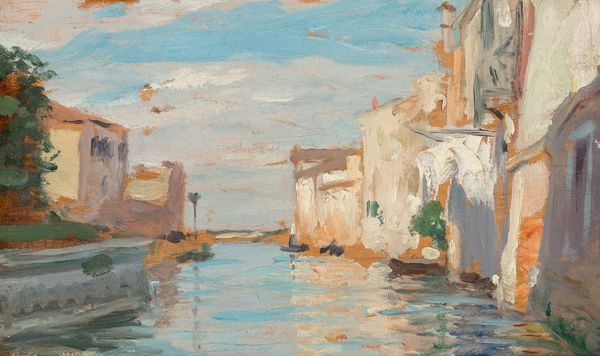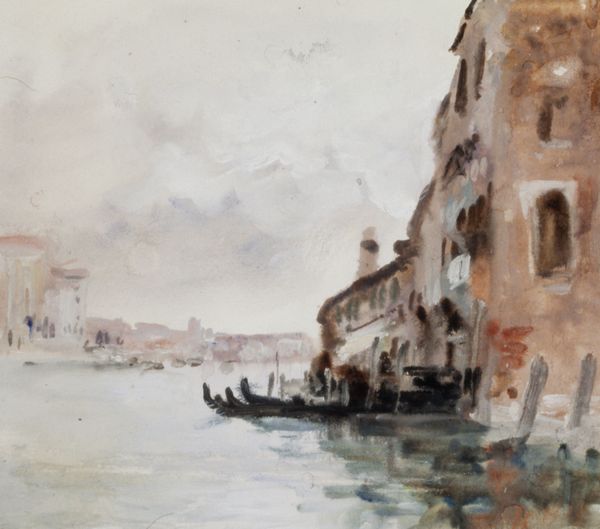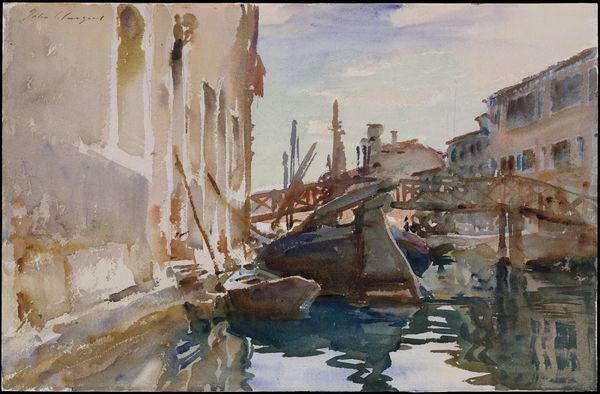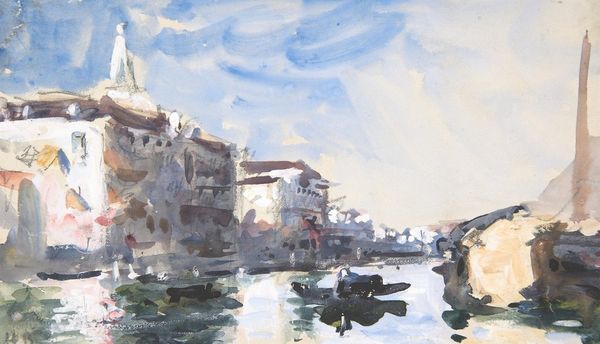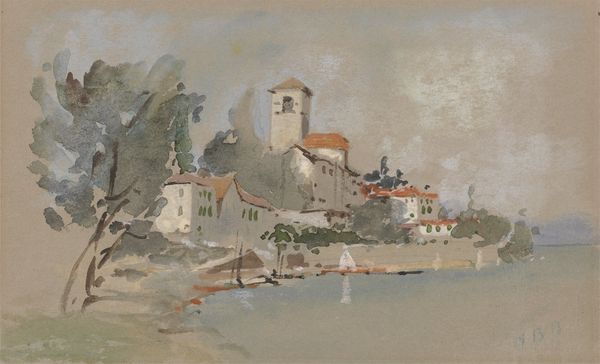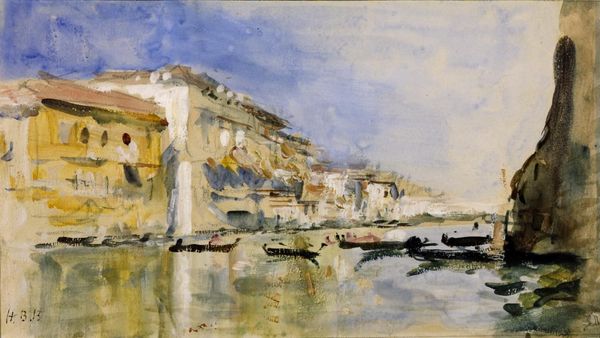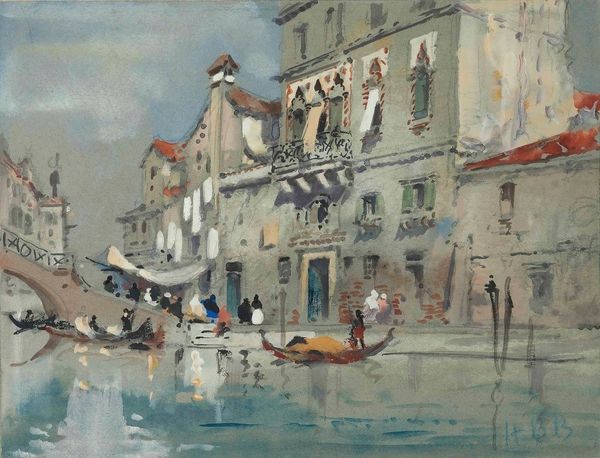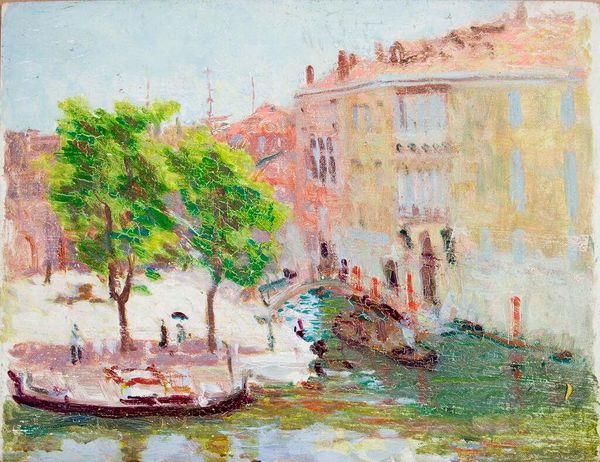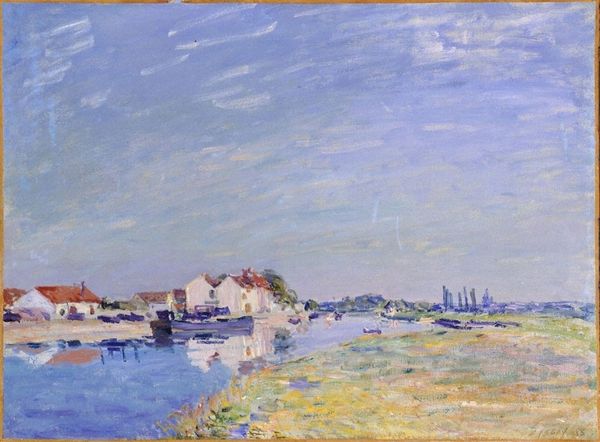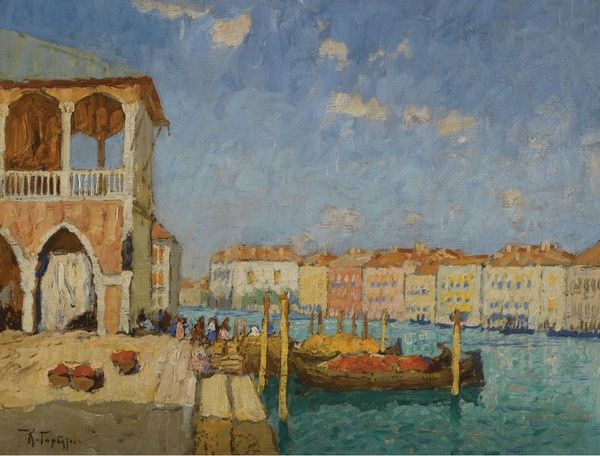
painting, plein-air, oil-paint
#
venetian-painting
#
painting
#
impressionism
#
plein-air
#
oil-paint
#
landscape
#
impressionist landscape
#
oil painting
#
cityscape
Copyright: Public Domain: Artvee
Editor: Here we have "Venice 2" by Hercules Brabazon Brabazon, an oil painting. It's incredibly atmospheric; you can almost feel the water and the heat haze. What can you tell me about it? Curator: I see a deliberate act of capturing Venice not as a monument but as a product. Consider the materiality: oil paint, easily transported and quick-drying, facilitating "en plein air" work. Brabazon isn’t just depicting Venice, he is actively consuming and reproducing its image through industrialized pigments and portable supports. Editor: Consuming its image? Curator: Yes. This ties directly into the social context. The Venetian paintings were in high demand at that time. The artist turns Venice into a commodity, an easily reproducible souvenir for the burgeoning tourist industry. Even the visible brushstrokes serve as a marker of authentic, handmade value within this mass consumption. Do you see it? Editor: I do. The brushwork also feels so casual and quick. Almost as if it's designed to be mass-produced. But wouldn’t that devalue the artistic labor? Curator: Not necessarily. It walks a fine line, doesn't it? The "sketchiness" can be read as immediacy and authenticity – qualities highly prized in a market saturated with reproductions. The loose brushstrokes also highlight the physical act of painting, the artist’s hand at work. Editor: So the means of production, the quick and easy oil painting, actually add to its value by implying labor and authentic experience? Curator: Precisely. Brabazon exploits this tension beautifully. The materials, the method, and the marketplace all intersect in this seemingly simple Venetian view. It is, in a sense, a very modern picture. Editor: That's given me so much to think about, it completely reframes how I look at the painting! Thanks!
Comments
No comments
Be the first to comment and join the conversation on the ultimate creative platform.

